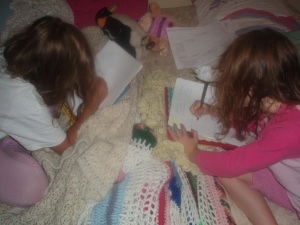Reading and writing go together like peanut butter and jelly. They complement each other and make the other stronger. Teachers who use best practice in their classrooms know this and incorporate writing daily with their reading instruction.
Consider yourself. When you read something and put it down it is often the end of it. If you read something and then are asked to write about it, that thinking/learning process continues. Writing can ‘cement’ certain understandings of the reading you just did. Many of our children are asked to think critically and write about something they just read. They may be asked to think about what they read that caused them to think of something new. They may be asked to write to connect the reading with something you already know. Sometimes, they may even be inspired to write a story after reading one. The latest trend in my household is that my girls have been asking to write before bedtime instead of read. Cool beans, I say.
In these and many other cases, writing enhances what the reader gets out of the reading because they are asked to think beyond the text and that is an essential skill for today’s college classrooms and workplaces.
